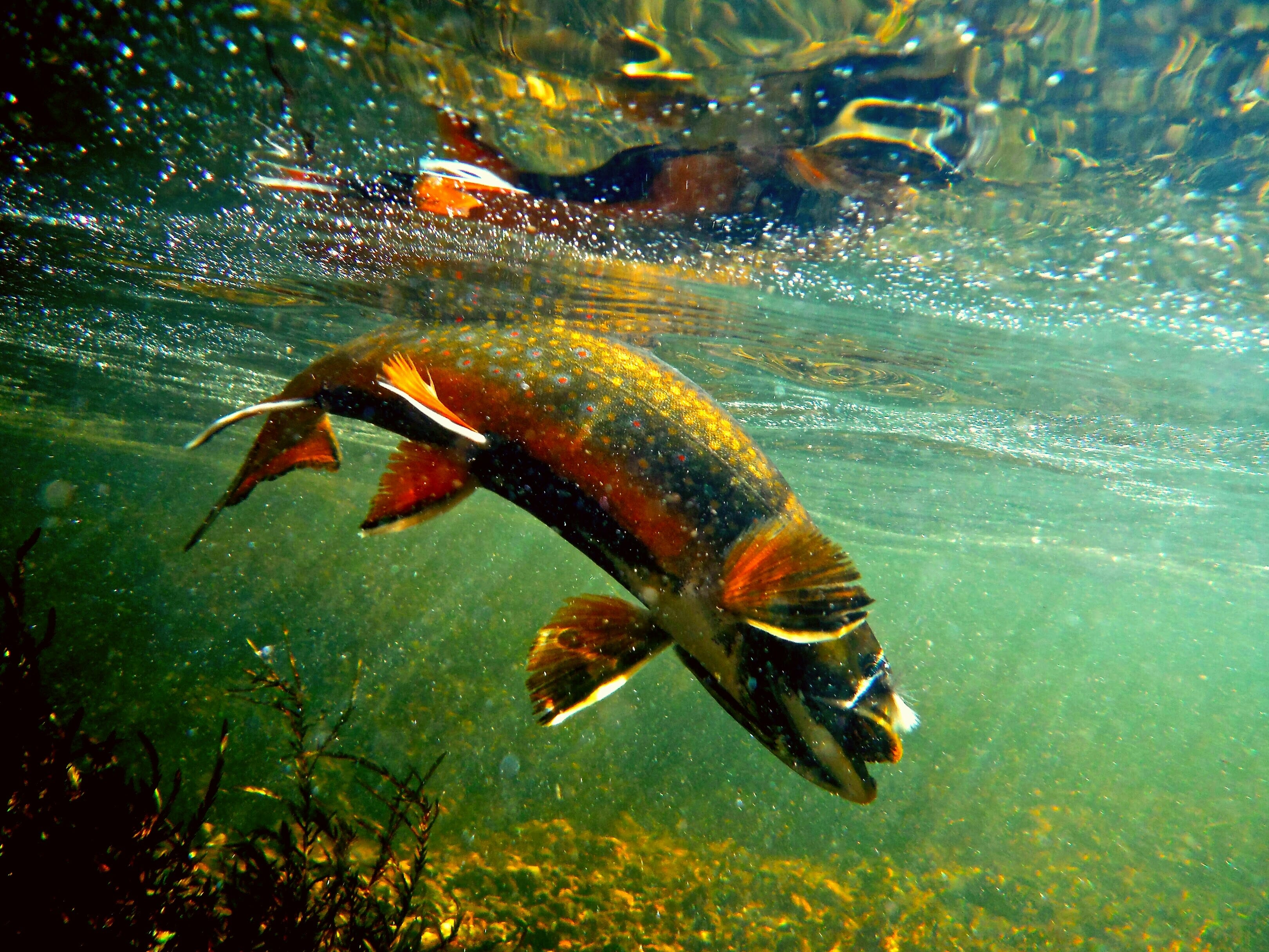A non-native brook trout in full spawning colors, Yellowstone National Park. Photo by Chris Hunt.
by Helen Neville
Many of us have struggled over the years with various efforts to eradicate non-native trout and restore native trout to their historical range. Often we work years either removing non-native trout by hand (electrofishing) or using chemicals frankly none of us really wants to apply, only to have the offending fish reappear in later years.
Frustrating, to say the least.
But what if we could let the fish do the work for us, without ever having to electroshock or apply piscicides? The Idaho Department of Fish and Game is doing just this, using basic genetic and hatchery techniques to develop a male fish with a “Trojan Y chromosome” that is expected eventually to eradicate its own kind.
The technique requires an organism, like fish, whose sex is determined largely by genetics but which also can be reversed environmentally (in this case, with hormones). Like in humans, male trout normally have two different sex chromosomes, an X and a Y. When they are crossed with a female (XX), the offspring get one sex chromosome from the dad (an X or a Y) and one from the mom (always an X), so half the offspring are female (XX) and half are male (XY)—this is why we typically have a 50:50 sex ratio.
But the sex phenotype, or outwardly apparent sex, of fish can be influenced environmentally. This means that exposing young male trout to female hormones can induce the males to develop eggs (creepy, I know). Importantly, as the reproductive cells of the male, those eggs are XY instead of the XX eggs a female would produce. When these XY eggs are fertilized by normal male milt (XY), ¼ of the resulting offspring are YY males [the offspring get 1 chromosome from each parent, so sort as 25 percent XX (normal female), 25 percent XY (normal male), 25 percent YX (normal male) and 25 percent YY (“Trojan” male)]. These YY males would then produce only male (XY) offspring when they spawn with a normal female.
Therefore, if the hatchery-produced YY males were continually stocked into a population with non-native trout, eventually the entire non-native population would become male and could no longer reproduce.
This technique was initially developed to control non-native fish but can also be used for the same purpose in other species, such as crustaceans or reptiles, and is also being applied in aquaculture for food production (where an all-male broodstock grows faster but doesn’t reproduce and poses little threat if any escape). YY males won’t be desirable for use in all situations, for instance where the non-native trout can breed with native trout—like in many western waters with both non-native rainbow trout (which would be the species of YY males production) and native cutthroat trout. But it could have tremendous promise, for instance, in eradicating brown trout and brook trout in the West or rainbow trout in the East anywhere there wouldn’t be a reproductive drag on the native species.
Where it make sense, seemingly, there are few drawbacks. The Trojan males carry no hormones (because they are the progeny of the hormone-treated fish) and are not genetically modified but rather are simply bred through normal aquaculture techniques. The larger size of males in general and the hatchery origin of YY males could pose some concerns (disease introduction to or increased competition with native trout, for example). Disease testing would be a must before introduction, as is standard practice these days, and competitive interactions in the field should be monitored carefully if native trout of concern are present.
In the end, if managers and the public no longer wanted these fish in the wild, all it would take is to discontinue stocking; eventually all the hatchery fish would die out and the wild population would recover a normal sex ratio and carry on.
IDFG is performing their pilot experiment with brook trout (while many of you in the East are actively trying to conserve native brook trout, out here in the West they are a non-native invasive that is a major factor in the decline of many of our native trout). Agency scientists have perfected the production of the YY male broodstock and now are in the midst of field experiments to verify the fish can actually survive and breed as expected; first indications are good, with active spawning and confirmation that the YY males produce all male progeny in the wild.
IDFG was given a major award for the research at this year’s American Fisheries Society meeting, and we are watching with excitement as they get data from their field experiments which hopefully will confirm that this is a viable technique for native trout conservation.
If you want to find out more, IDFG has a good information page and helpful questions and answers on their website, and this academic review paper provides a nice overview of the technique and figure for those interested in the wonky details.
Helen Neville is TU’s director of research and science programs. She lives and works in Boise, Idaho.



